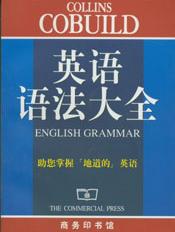牛津实用英语语法-第71章
按键盘上方向键 ← 或 → 可快速上下翻页,按键盘上的 Enter 键可回到本书目录页,按键盘上方向键 ↑ 可回到本页顶部!
————未阅读完?加入书签已便下次继续阅读!
277 代替从句的现在分词短语
?
这种结构主要用于书面英语。
现在分词可代替as/since/because+ 主语+ 动词,即分词可
帮助解释其后面所发生的动作:
Knowing that he wouldn’t be able to buy food on his journey he tooklarge supplies with him.相当于:
As he know…
他知道路上买不到食物,就带了很多食物。
Fearing that the police would recognize him he never went out in day…light.相当于:
As he feared…
因为害怕警察认出他来,他从不白天出门。
注意:当 being位于句首时,通常意为 as he is或as he was(由于他是……):
Being a student he was naturally interested in museums.相当于:
Because/As he was a student…
他作为一个学生,自然对博物馆感兴趣。
这里 being a student的意思并不是while he was a student(在他学生时代)。
这样使用的分词的主语并不一定要与跟在后面的动词的主语相同。它可以带有自己的主语:
The day being fine,we decided to go swimming.
天气好,我们决定去游泳。
在这种情况下分词必须跟在作其主语的名词/代词之后。Be…ing fine the day,we decided…是错误的。但是 Being athletic,Tom found the climb quite easy(作为运动员,汤姆觉得这次爬山比较容易)是正确的,因为汤姆同时是found和后面跟着的climb的主语。
同一个句子中可以连着用两个或两个以上的现在分词:
Realizing that he hadn’t enough money and not wanting to borrow fromhis father,he decided to pawn his watch.
知道自己钱不够,又不想从父亲那里借钱,他决定把手表当掉。
Not knowing the language and having no friends in the town,he found ithard to get a piece of work.
既不懂当地语言,在此城又没有朋友,他发现自己很难找到一份工作。
?
'Amber demo'
278 分词的完成式(主动语态)
?
A 形式
having+ 过去分词:
having done牋牋?having seen
B 用法
分词的完成式可代替现在分词,如第276节B中所举的例子所示(即同一个主语的一个动作紧接着另一个动作):
Tying one end of the rope to his bed,he threw the other end out of thewindow.相当于:
Having tied one end of the rope to his bed,he threw the other end out ofthe window.
他把绳子的一头系在床上,另一头扔出窗外。
分词的完成式强调第一个动作在第二个动作开始前就已经完成,但除非使用现在分词的一般式可能使意思混淆不清外,一般不必要使用这种结构。下面是造成混淆的一个例子:Read…ing the instructions,he snatched up the fire extinguisher。这句话给人的印象好像是两个动作同时发生的。因此在这里用分词的完成式比较合适:
Having read the instructions,he snatched up the fire extinguisher.
看完了说明书之后,他迅速拿起了灭火器。
如果两个动作之间有一段间隔,则必须用分词的完成式:
Having failed twice,he didn’t want to try again.
已经失败了两次,他不想再试了。
如第一个动作持续一段时间时,也必须用分词的完成式:
Having been his own boss for such a long time,he found it hard to acceptorders from another.
自己当老板已经这么久了,他觉得难以听从别人的差遣。
?
'Amber demo'
279 过去分词(被动语态)及分词的完成式(被动语态)
?
A 形式
规则动词的过去分词由不定式加ed或d构成:
worked牋牋牋牋牋?loved
不规则动词的过去分词参见第39节。
B 用法
1 用做形容词:
stolen money偷来的钱
a written report 一份书面报告
fallen trees 倒了的树木
broken glass 碎玻璃
tired drivers 筋疲力尽的司机
blocked roads堵塞了的马路
2 用来构成完成时态、不定式的完成式、分词的完成式以及被动语态:
he has seen
to have loved
it was broken
3 正如现在分词可以用来代替主语+ 主动态动词结构一样,过去分词可以代替主语+ 被动态动词结构:
She enters.She is acpanied by her mother.相当于:
She enters,acpanied by her mother.
她由母亲陪着走了进来。
He was aroused by the crash and leapt to his feet.相当于:
Aroused by the crash,he leapt to his feet.
他被撞击声惊醒,一跃而起。
The bridge had been weakened by successive storms and was no longersafe.相当于:
Weakened by successive storms,the bridge was no longer safe.
Having been weakened…
这座桥遭到接二连三的暴风雨的破坏,已经不安全了。(请看下面)
As he was convinced that they were trying to poison him, he refused toeat anything.相当于:
Convinced that they were trying to poison him,he refused to eat any…thing.
因确信他们正企图毒死他,他拒绝进食。
C 当有必要强调分词表示的动作发生在其后一个动词表示的动作之前时,应当用分词的被动完成式(having been+ 过去分词):
Having been warned about the bandits,he left his valuables at home.
听到关于强盗出没的警告,他把贵重物品都留在家里了。
Having been bitten twice,the postman refused to deliver our letters unlesswe chained our dog up.
邮递员被狗咬了两次之后要我们把狗拴起来,不然就不给我们送信了。
?
'Amber demo'
280 误连分词
?
通常认为分词是说明它前面的名词或代词:
Tom,horrified at what he had done,could at first say nothing.
汤姆被自己所做的事吓坏了,一开始都说不出话来了。
Romeo,believing that Juliet was dead,decided to kill himself.
罗密欧相信朱丽叶已死,就决定自杀。
A man carrying a large parcel got out of the bus.
一个拿着一大包东西的男人下了公共汽车。
但要注意分词也可被主要动词把它跟所说明的名词或代词隔开:
Jones and Smith came in,followed by their wives.
琼斯和史密斯进来了,他们的妻子跟在后边。
She rushed past the policeman,hoping he wouldn’t ask what she had inher suitcase.
她赶紧从警察身边走过去,希望他不会问起手提箱里有什么。
如果在分词前面没有名词或代词,则认为分词是说明后面主要动词的主语的:
Stunned by the blow,Peter fell heavily.
彼得被这一击打昏了,重重地倒了下去。(彼得被击晕了。)
Believing that he is alone,the villain expresses his thoughts aloud.
那恶棍相信他身边没别人了,出声说出了自己的想法。
如果不遵守上述法则,就会造成混乱。 Waiting for a bus abrick fell on my head的意思似乎是说砖头在等候公共汽车,那岂非笑话。分词与名词或代词被这样错误地连接时就叫做误连分词。上述句子应改写成:
As I was waiting for a bus a brick fell on my head.
在我等公共汽车时一块砖头落到了我的头上。
下面再举几个误连分词的例子:
(误)When using this machine it must be remembered…
(正)When using this machine you must remember…
使用这台机器时(你)必须记住……
(误)Believing that I was the only person who knew about this beach,thesight of someone else on it annoyed me very much.
(正)As I believed I was the only person/Believing that I was the only per…son on the beach,I was annoyed by the sight of someone else.
因我自以为是唯一一个在这海滩上的人,看到有别人在这里时所以心里很不高兴。
?
'Amber demo'
第二十七章 命令、请求、邀请、劝告及建议?
?
'Amber demo'
281 祈使句表示命令
?
A 第二人称祈使句
1 它与不带to 的不定式形式相同:
Hurry!
赶快!
Wait!
等一等!
Stop!
停止!
在构成否定式时,要在动词之前加上do not/don’t:
Don’t hurry!
不要太急!
2 所命令的对方的名字常常不提,但可由一个置于句末的名词来表示:
Eat your dinner,boys.
男孩子们,吃饭吧。
Be quiet,Tom.
汤姆,安静点儿。
这些名词也可以置于动词之前,但这种用法不那么普遍。除非说话人有意表示无礼,或想要有所区别,否则很少使用代词you:
You go on;I’ll wait.
你们先走,我等着。
3 表示肯定意义的祈使句之前可以用 do:
Do hurry.
快一点儿吧!
Do be quiet.
安静点儿吧!
do可以使句子具有劝说的口气,但也可以表示厌烦。
B 第一人称祈使句
形式
let us/let’s+不带to的不定式:
Let us stand together in this emergency.
在这紧急关头,让我们团结一致。
构成否定式时,一般要在不定式之前放一个not:
Let us not be alarmed by rumours.
我们不要因小道消息而惊慌。
但在日常口语中,可以把don’t 放在let’s之前:
Don’t let’s be alarmed by rumours.
(译文同上。)
通过 let us/let’s说话人可以催促对方以某种方式






